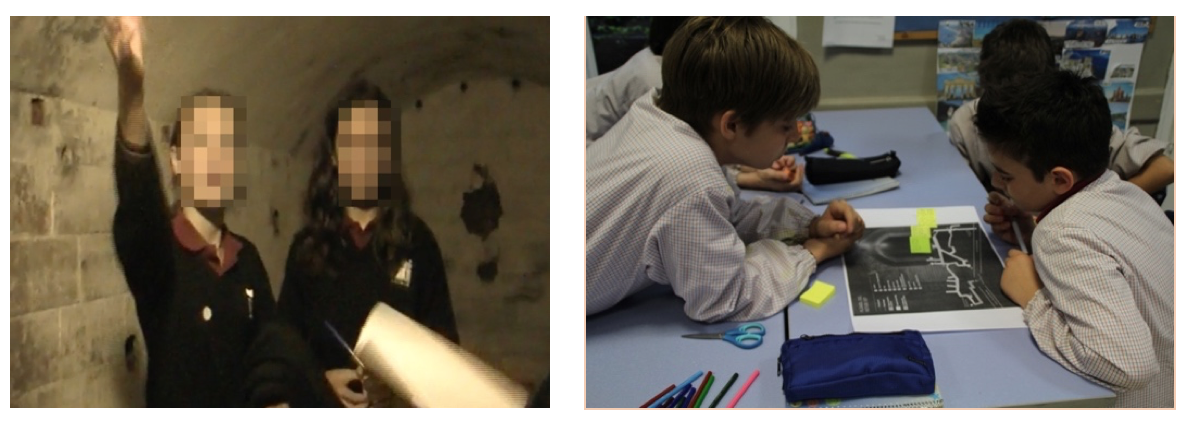Dwelling Space Technique
The Dwelling Space Technique can help researchers to analyse how Full-Body Interaction could contribute to an improvement of the learning experience.
Description:
The Dwelling Space Technique allows to understand children’s worldviews in relation to an educational context. On the other hand, it allows observing how the children become bodily engaged with a specific physical space. These aspects can help researchers to analyse how Full-Body Interaction could contribute to an improvement of the learning experience. In our approach, each group receives a map of a specific location related to an educational activity and is asked to choose the place that catches their attention the most. They are then encouraged to go to their place of interest and record a short video about why their group chose that place. In a redesign activity, the students are then instructed to brainstorm new ideas for the educational activity.
Benefits:
- Analyse how children's physical presence in the location influenced their proposals
- Propose possible enactments for the interactive experience
- The opportunity to explore the location, leads to a better understanding about the main purpose of the educational experience
- Helps to overcome different levels of children in expressing themselves verbally because they can include visual clues and body language

Related Publications:
Marie-Monique Schaper, Ole Sejer Iversen, Laura Malinverni, Narcis Pares. (2019). FUBImethod: Strategies to engage Children in the co-design of Full-Body interactive experiences. International Journal of Human-Computer Studies., 132: 52-69. DOI= http://doi.org/10.1016/j.ijhcs.2019.07.008
Marie-Monique Schaper, Maria Santos, Laura Malinverni, Juan Zerbini Berro and Narcis Pares. (2018). Learning about the past through situatedness, embodied exploration and digital augmentation of cultural heritage sites. International Journal of Human-Computer Studies, 114: 36-50. DOI
